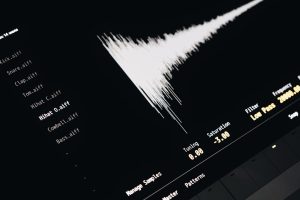
Ready to dive into ETF trends but don’t know where to start? No worries! Let me introduce you to Fintechzoom.com. It’s like your friendly neighborhood tool to check what’s hot (or not) in the Exchange-Traded Funds world. Let’s break it all down into bite-sized steps so it feels less like rocket science and more like scrolling through your favorite app.
What’s an ETF Anyway?
Think of an ETF as a big basket full of different types of candies. Only, in this case, the candies are stocks or bonds. One ETF can include tech giants, energy companies, or even eco-friendly businesses. You can buy a share of that big candy basket through your broker. Yes, it’s that simple.
Now, the tricky part is figuring out which candy basket is gaining popularity and which one’s going stale. That’s where Fintechzoom.com comes in!
Step 1: Visit Fintechzoom.com
First things first — go to Fintechzoom.com. You’ll land on their homepage packed with charts, tickers, news, and more. Don’t get overwhelmed. We’ll take it slow.
Look for a search bar or ETF news on the homepage. That’s your golden ticket.
Step 2: Type in the ETF You’re Curious About
Let’s say you’re interested in the “SPY” ETF, which tracks the S&P 500 Index. Type “SPY” into the search bar. Boom! You’ll get current performance stats, charts, and related news articles.
There’s usually a graph showing how the ETF has moved over the past day, week, month, or year. That visual alone can tell you a lot.

Step 3: Read the News!
Right below or next to the chart, Fintechzoom often lists current news about that ETF or its sector. Reading those is like getting the ETF’s diary. Find out what affected the price. Was it earnings season? Breaking economic news? Maybe a big acquisition?
Tip: Look for upward or downward spikes on the chart. Then line that up with the news story published that same day.
Step 4: Compare ETFs
What makes Fintechzoom extra handy is its capability to compare. Let’s say you’re looking at the SPY but also want to see how “VTI” (another popular ETF) is doing. Search both and view their charts side by side.
Ask yourself:
- Which ETF shows better long-term growth?
- Which one is more volatile?
- Do they respond differently to market news?
This is gold for making investing decisions!
Step 5: Check Volume and Holdings
Still on Fintechzoom? Great. Scroll down or look for tabs or buttons labeled “Holdings” or “Volume”.
Volume = how many people are buying or selling the ETF.
Holdings = which companies or bonds make up the ETF.
If the ETF has a lot of shares of Apple, Google, and Tesla, then you know it’s tech-heavy. So, if the tech market goes up, your ETF probably will too.

Step 6: Read Analyst Opinions
Some ETF pages on Fintechzoom also show what the pros are saying. They’ll rate ETFs based on expected growth, safety, or income potential. Read a couple of these. Just remember — experts don’t always get it right, but it helps to balance your own thinking.
Bonus: Follow Fintechzoom Alerts
Want to stay in the loop? Some pages let you sign up for updates. If your ETF jumps or dives, Fintechzoom will ping you. It’s like your ETF sending you a text when something important happens.
In a Nutshell
Analyzing ETFs on Fintechzoom is super friendly and fast.
- Search the ETF name or ticker.
- Study the price chart and volume.
- Read the news and stock holdings.
- Compare ETF stats side by side.
- Consider expert opinions — with a grain of salt.
And don’t forget — investing should be fun, not stressful! Use tools like Fintechzoom.com to stay informed and confident.
Happy investing!






